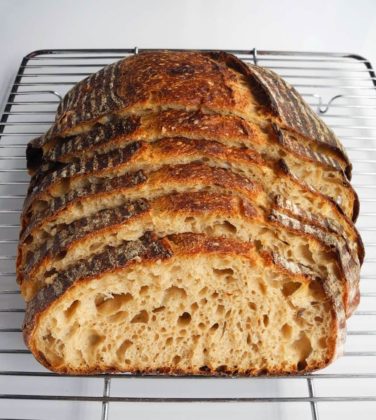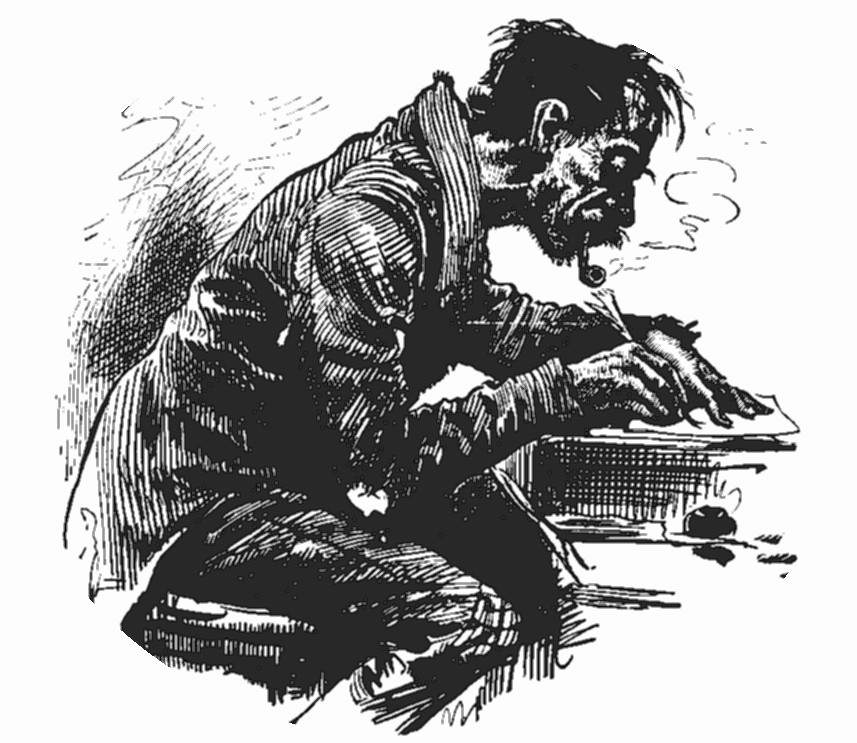The Writer’s Guide To Bread Baking
Bread Baking For Writers
How writers and 6-year-olds can bake better bread than you buy in most grocery stores and bakeries.

Anyone can do any amount of work, provided it isn’t the work he is supposed to be doing at that moment. —Robert Benchley
Writers have more hobbies than other people, because writers are often looking for something to do other than the writing they are supposed to be doing. Best of all is something (other than writing) that must be done immediately, like taking the bread out of the oven. It can’t wait and is therefore a legitimate excuse to take a writing break.
Writing & Structured Procrastination
Baking bread when one really should be reading or writing is a perfect example of what Stanford philosopher John Perry calls Structured Procrastination, the title of his widely admired essay on the topic. As Professor Perry put it:
Procrastinators seldom do absolutely nothing; they do marginally useful things, like gardening or sharpening pencils or making a diagram of how they will reorganize their files when they get around to it. Why does the procrastinator do these things? Because they are a way of not doing something more important. If all the procrastinator had left to do was to sharpen some pencils, no force on earth could get him do it. However, the procrastinator can be motivated to do difficult, timely and important tasks, as long as these tasks are a way of not doing something more important.
So the writer who takes up bread baking can at least be applauded for turning his powers of procrastination to a pursuit worthier than sharpening pencils. While not writing, it’s possible to learn about the law, computer programming, teaching, hiking, how to play the guitar, bicycling, motorcycling, running, shooting rubber bands, and how to bake bread.
Baking bread is the perfect writer hobby. Mixing a batch of dough takes only five or ten minutes and is a nice break from the focused intellectual labor of reading or writing. The writer’s family may deplore the mess, but they’ll come to love the tastes and smells.
Baking two loaves of bread requires only another fifty cents worth of flour and a few more minutes of time, and then the writer has an extra loaf to give to a friend. This will make the writer popular, even though he is odd and spends too much time alone.
But where to begin?
Jim Lahey’s No-Knead Bread
Start easy.
The easiest bread recipe in the world is also, I have heard, the most downloaded recipe from the New York Times website for ten years now. It comes with a video of then Times food columnist Mark Bittman at the Sullivan Street Bakery in Manhattan’s Hell’s Kitchen, where chief baker and owner Jim Lahey shows you just how easy it is to bake bread. As Bittman observes, a 6-year-old can easily bake better bread than you find in most bakeries and grocery stores.
Jim Lahey’s recipe for no-knead bread also comes with the free how-to video (see below).
No-knead bread requires no special tools, but you do need a Dutch oven to bake the bread in. These come in all shapes and sizes, usually made of cast iron, enamel, Pyrex or ceramic.
Two examples of Dutch ovens show the wide price range. The Lodge cast iron Dutch oven is around $35, and the fancy Le Creuset Dutch oven costs almost ten times as much. I think they do about the same thing, but the purists will argue about aesthetics and superior heat retention and distribution.
Lahey’s Famous Bread Video
Sourdough Bread
Lahey’s recipe is just “no-knead” overnight white bread. It tastes great, but is not what many people prefer, namely, sourdough bread. Sourdough is made in stages and takes two or three days from start to finish. It’s not time-consuming, but does require five minutes here and there over a few days.
For the writer who is curious about how to make sourdough bread and other more exotic and complex breads, I have linked to some tools and resources below. Until then . . . .
Get Back To Work!
Writers write, and that’s easy to arrange by manipulating the forces of structured procrastination. All the writer needs is something even more important than writing that the writer should be doing, and then the writer will write to avoid doing the other more important thing. Voila.
For example, observe how writer productivity increases and indeed even accelerates from about the first of February until the Day Of Dread, April 15th, Tax Day. During these months, the writer should be doing the writer’s taxes. Important? Absolutely. If the writer doesn’t pay taxes in a timely manner, the next book could be written in jail. Doing the taxes is so important that it inspires the usual procrastination, and the writer looks around for something else to do, like writing.
When the writer needs a break, there’s always bread to bake, and the taxes will get done on the evening of October 14th, the night before the application for automatic extension of time to file the tax return expires.
Bread Baking Resources & Tools
A Bread Baking Book
Hundreds exist. This is my favorite, by Ken Forkish, who runs bakeries and restaurants in Portland, Oregon.
- Flour Water Salt Yeast: The Fundamentals of Artisan Bread and Pizza. Walks you through making your first easy loaves all the way up to trickier sourdoughs and “double-fed sweet levain.”
- Ken also makes great videos that show you the techniques described in the book: Ken’s Artisan Channel on YouTube.
Two Bread Baking Websites
- King Arthur Flour. Flour makes a big difference in taste. Start with King Arthur All-Purpose Flour and explore from there. You can find it in most grocery stores for less than the price at the link, but it still costs more than other flours. Because it’s better.
- The Fresh Loaf. Bread bakers eager to share recipes and tips.
Bread Baking Tools
These are links to some of the tools I’ve purchased over the years.
- Frieling Brotform Round Bread Rising Basket. You can get by with a cloth in a bowl or a hundred other makeshift proofing baskets, but these work the best. They are expensive, and I don’t see deals on them. They cost what they cost.
- OXO Good Grips 5-Pound Food Scale with Pull-Out Display, Black. Real bakers weigh ingredients. A cup of flour A may weigh up to a third less than a cup of flour B. Volume measurements are suspect. This 5-pound-capacity scale is plenty for baking two loaves at a shot. More than that and you should get the 11-pound version of the same scale.
- 12 Quart Cambro Tub. The perfect size for mixing a 2-loaf batch. I think it is the very model Ken Forkish recommends in his book (below).
- 6 Quart Cambro Tub. This is a smaller container for mixing “pre-ferments” and smaller batches of dough.
- OXO Good Grips Multi-purpose Stainless Steel Scraper & Chopper. Pastry knife for dividing the dough, or cutting rolls or baguettes.
Happy Baking (and Writing).
RD


